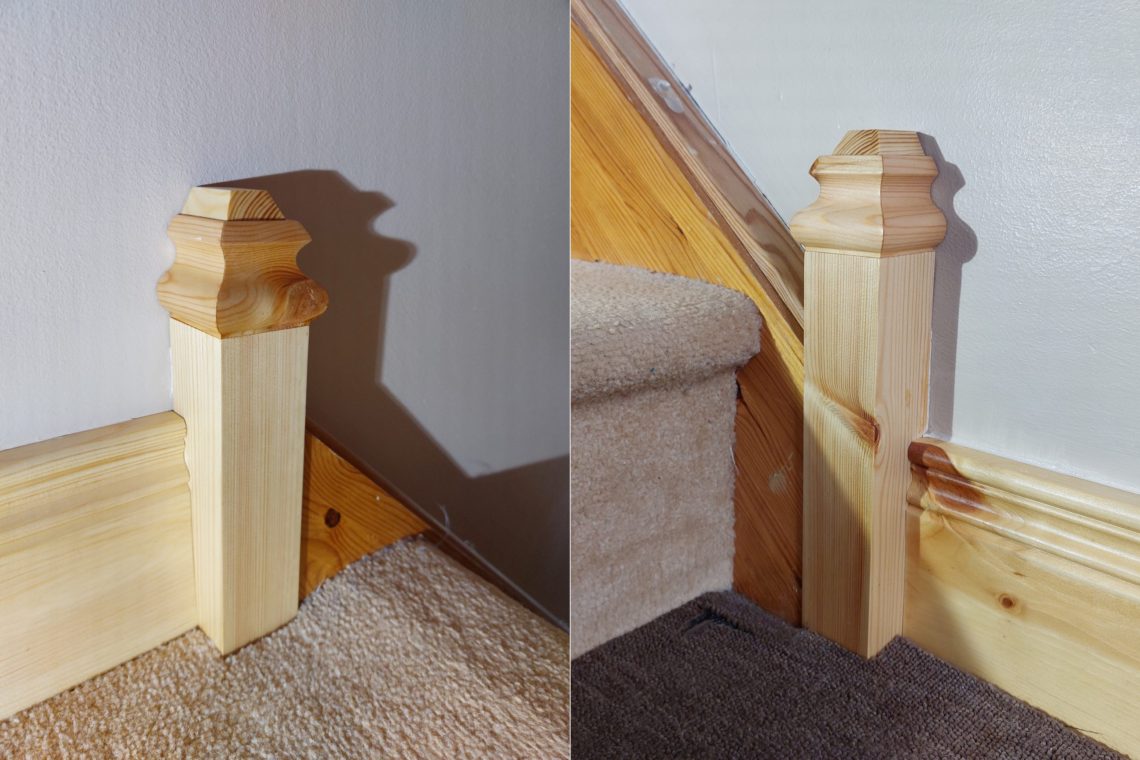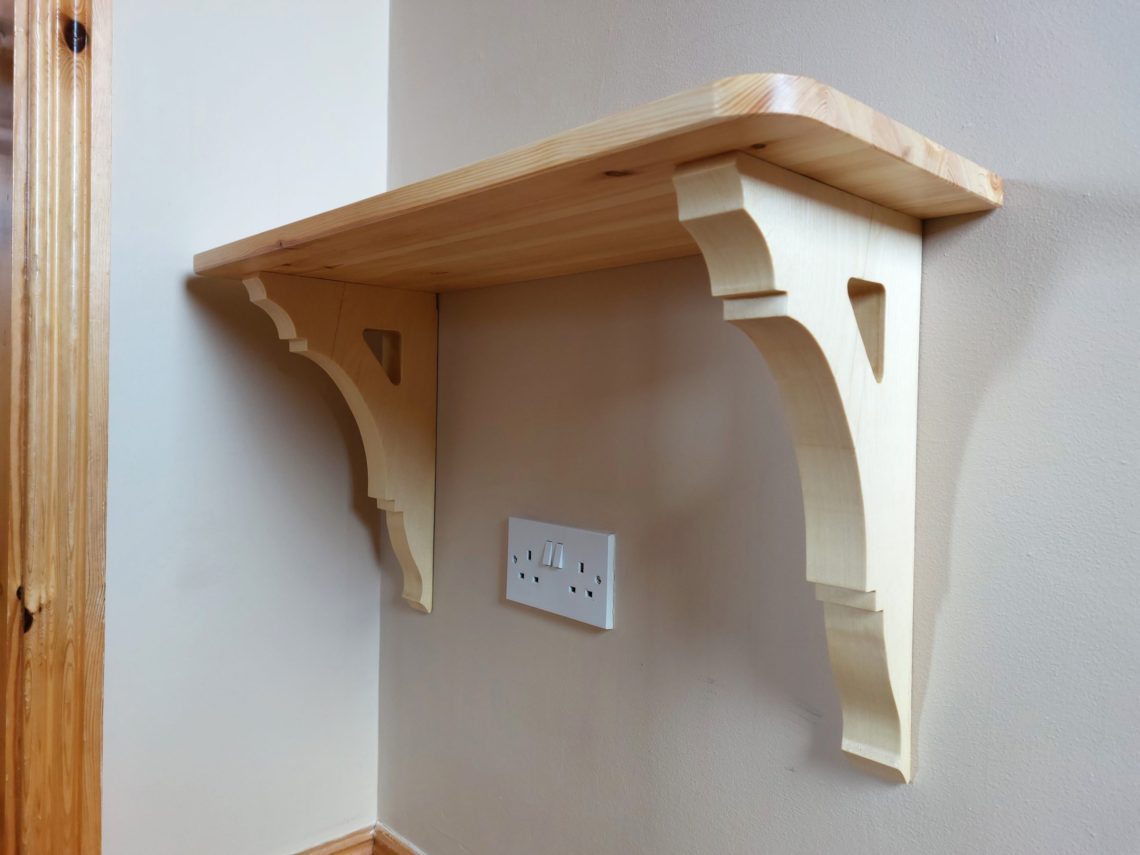-
Krupnik Old Liqueur glass
This liqueur is one of my favourites, it comes in a redesigned bottle now that is perfect for drinking glasses and other containers – like flower vases. The front label is easy to remove but the back one requires white spirit to come off. As always, I cut the bottle with my jig and once the line is scored, I alternately pour boiling and cold water over it and it cracks. I use jars, oil bottles, wine bottles and everything else – square, round, it doesn’t matter. As long as the line is scored straight, there’s a big chance that…
-
Stringer-to-skirting transition blocks
There was always something visually missing between the stringer and the skirting boards, they were simply installed directly beside each other regardless of their shapes. But that was about to change and the stairs were getting an upgraded look. I made 2 transition blocks, slightly thicker than the stringer to create a reveal, I also installed new skirting boards on that wall. The blocks had a core covered with trim bits glued from 4 sides. They were made of pine to match the stringer and skirting boards and fixed to the wall with adhesive and not nails. I started by…
-
Shelf on a cliff
It started as a simple, heavy-duty, chunky outdoor shelf, but it quickly became a project that couldn’t exist on its own. It was just too ugly. Because of the opening underneath it, all of its structure was exposed and it needed to be masked. I decided to use the decorative little fence I made just a few days earlier to cover up the massy pillar. As to that concrete post it was all attached to, it was part of a farm gate, I guess. It has a hook on the side and the area it adjoins to was a country…
-
Decorative little fence
Like a full-size fence, that one also comprised pickets, rails and posts. It was made of scrap wood, but not any wood – those very offcuts came from the building of a real fence. 13 mini pickets in total, 4 of them were longer and served as posts that could be set in the ground. Rails were simplified and they were just perforated steel band straps. Each picket was fixed with screws in 2 places, allowing the fence to be set on a slope. It even came with a setting tool that made the pounding down a little easier and…
-
Radiator shelf
The purpose of this shelf was to fill out an empty space above the radiator, if it was hung somewhere else it’d have a different name. Shelves are the most common and frequent projects that I make. None of them is the same, they’re always unique. Their names have to be unique too. This is just an idea of giving them names instead of numbers. In this project, I used the joints that made the brackets naturally strong and they didn’t have to be reinforced with anything. The board is fixed to the brackets with screws and it has some…
-
Corbel shelf
Both corbels are made from upcycled material, but I saved some time by buying a board for the top instead of making it myself. The shelf is put together with dowels and glue and that way there are no visible fasteners, not to mention its mounting brackets that are also hidden from sight. The corbels are thick and long, they dominate the shelf visually, giving an illusion of sturdiness. Because the shelf is made of softwood, it’s naturally light and all the force that the brackets can take is left for what is going to be put on the shelf.…
-
Reusing a cracked chopping board
It was a beautiful, bamboo chopping board, unfortunately, due to the heat and moisture, it cracked along 2 lines. I didn’t want to reglue it because it looked perfect for some small projects and experiments. I made what I needed in my household – a simple coaster and a soap tray. There was still some crack-free board surface left to use, but I stopped at 2 projects and put the board aside for a while. I started from the coaster, as it was a more urgent thing to have, using a template that I made in the past. I had…
-
Spire
Made from a single piece of timber without using a lathe. It was cut with a table saw and a very simple jig that had to be built for that project. The spire is 88 cm tall (~ 35 inches), its peak isn’t sharp but if it was the spire would be 35 cm taller (another 13 3/4″) and that way it would form a perfect cone. This project was inspired by The Spire of Dublin and it’s also made in Ireland. It must be very Irish to build spires, I guess. As mentioned, the jig I built for the…
-
Over-engineered metal-free box
This box is made out of 100% upcycled materials, the walls and the bottom of this box are veneered chipboard sheets, reclaimed material that came from an unwanted piece of furniture. Solid timber corners were made in the past, using a router and 2 common bits, I made a few of them and they were put aside and waited for the right project. They were originally a single board used on a construction site. The bottom rails were off-cuts from another project – basically just scraps. Everything is glued together – which makes the box 100% metal-free. Even during the…
-
Bookcase
This is a simple but quite sturdy construction, it has a modern, industrial look, and it can be disassembled and moved by one person. The plywood shelves are perfect for supporting heavy items, like books, that’s why this bookcase uses them instead of solid wood boards, which had to be thicker to support the same weight. The frame is designed to be rigid and not to take up much space. All the metal braces and screw heads are either painted white or covered with white caps. This bookcase was relatively easy to make – the hardest part was the cutting…









